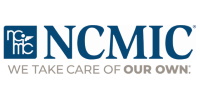Apr
23
If an initial claim determination results in a denial, providers, participating physicians, and other suppliers have the right to appeal the decision. National Government Services has seen an increase in the number of claims submitted to Medicare Part B Appeals for review and may cause a delay in receiving your decision. We are processing appeal and reopening requests in an efficient manner and working diligently to resolve these issues expeditiously. Our goal is to minimize disruption to the provider/supplier and beneficiary community. You will receive a decision as soon as possible; we appreciate your patience during this period.
Important Information
Important Information
- Do not submit a duplicate appeal.
- If you are a current NGSConnex user, you can check the status of your appeal at http://www.NGSConnex.com. Please note: do not resubmit the appeal when using NGSConnex.
- The appeals process, levels of appeal, documentation, and recommended forms can be found on our Web site under Review Process > Appeals.
- A local coverage determination (LCD) is a decision a Medicare contractor will make to cover a particular item or service. A majority of appeal requests are the result of the initial claim not following the LCD. It is important to become familiar with LCDs and national coverage determinations (NCDs).
- LCDs contain information to indicate medically reasonable and necessary documentation and should be used as an administrative and educational tool to assist with submitting correct claims for payment. LCDs are located on our Web site in the Medical Policy Center.
- The Centers for Medicare & Medicaid Services Internet-Only Manual Publication 100-03, Medicare National Coverage Determinations (NCD) Manual describes whether specific medical items, services, treatment procedures, or technologies can be paid for under Medicare. All decisions that items, services, etc. are not covered are based on Section 1862(a)(1) of the Act unless otherwise specifically noted. More information on NCDs can be found on the Medicare Coverage Determination Process page on the CMS Web site.
- Not all covered Medicare services are subject to either an LCD or NCD.
- LCD for Noncovered Services (L32456)
- LCD for Routine Foot Care and Debridement of Nails (L26426)
- LCD for Chiropractic Services (L27350)
- LCD for Removal of Benign Skin Lesions (L27362)
- LCD for Noninvasive Vascular Studies (L27355)
- LCD for Drugs and Biologicals, Coverage of, for Label and Off-Label Uses (L25820)
- LCD for Vitamin D Assay Testing (L29510)
- Article for Tetanus Immunization - Medical Policy Article (A49710)
- LCD for Pain Management (L28529)
- LCD for Transthoracic Echocardiography (TTE) (L27360)




